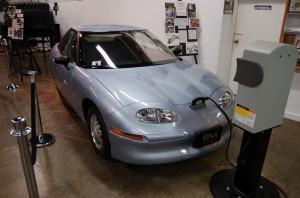 Notice how the title of this post says nothing about the environment. Think that’s intentional? Despite Nissan Leaf commercials (like the one below), electric vehicles are not about saving the environment. How can they be? Roughly half the electricity in the United States is generated from the combustion of coal. Another 20% comes from nuclear power. With natural gas and oil pushing the mix to roughly 75%, these vehicles are not as “green” as some in the industry portray them. This is not news. GreenCars.org rated EVs lower than other cars in this year’s green car rankings.
Notice how the title of this post says nothing about the environment. Think that’s intentional? Despite Nissan Leaf commercials (like the one below), electric vehicles are not about saving the environment. How can they be? Roughly half the electricity in the United States is generated from the combustion of coal. Another 20% comes from nuclear power. With natural gas and oil pushing the mix to roughly 75%, these vehicles are not as “green” as some in the industry portray them. This is not news. GreenCars.org rated EVs lower than other cars in this year’s green car rankings.
However, EVs do accomplish three goals that are essential for a sustainable future. Nearly all of our current electricity is produced by domestic resources. As the renewable sources become more prevalent, emissions will decrease and electricity generation will remain domestic. The cost of coal, nuclear, oil, and natural gas will increase over the long run as they become more scarce. Renewable sources will help keep prices stable. By the same token, gas prices (derived from oil 70% of which came from imports just a few years back) will continue to rise over the long term. It is this very fact that nearly three-quarters of our crude oil comes from abroad that is a major cause for concern.
If systems like the battery swapping option envisioned by Better Place come to fruition, “excess” renewable energy could be stored during the highest production times, even if these do not align with peak load. In a perfect setting, people would be able to swap out the batteries at home. One battery could charge at home while another one is being used in the car. The driver could swap out the depleted battery for a fresh one and take off while the used battery stores renewable energy produced on site.
This convergence of factors epitomizes what it means to be sustainable. In other words, a sustainable venture is a win-win-win. This is the essence of the triple bottom line. Electric vehicles represent a best bet for environmental, economic, and social concerns. The latter can be achieved through domestic jobs of varying pay, cleaner cities (especially urban centers where poor, disadvantaged populations often live). There is a way forward and it’s paved roads are covered with electric cars.
[Image source]

